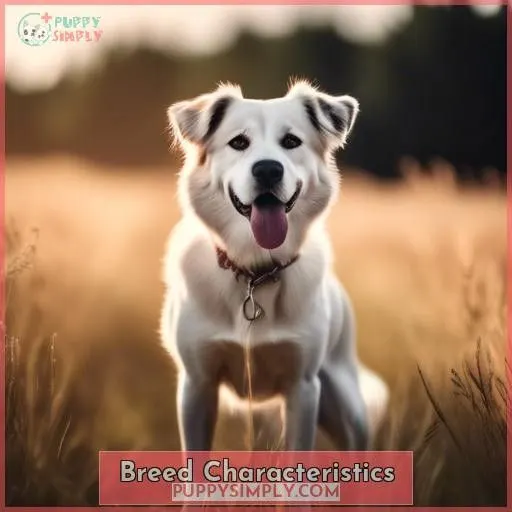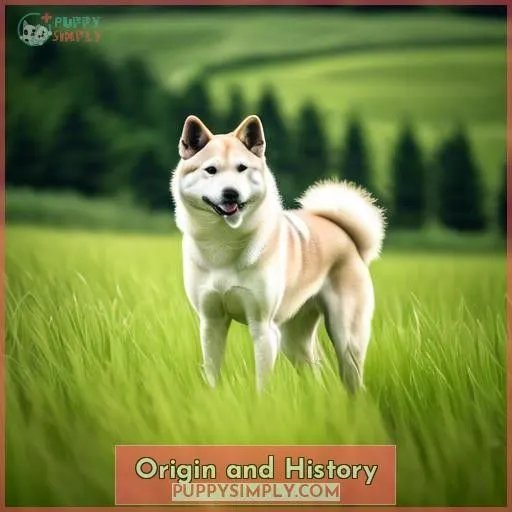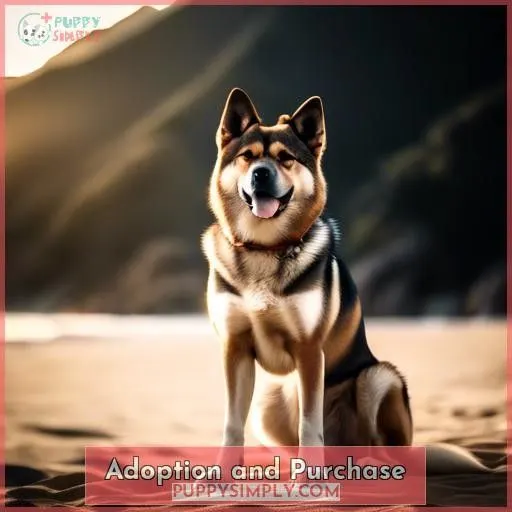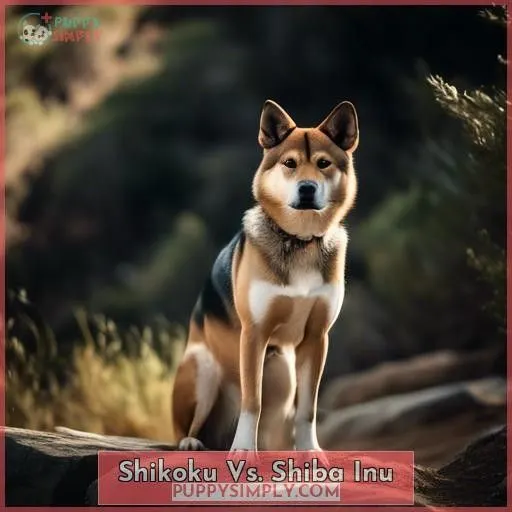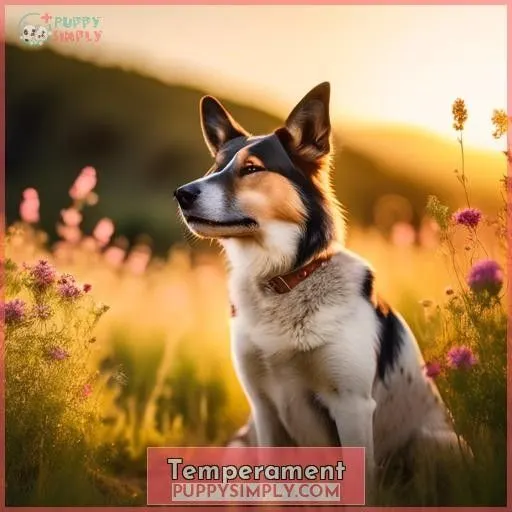This site is supported by our readers. We may earn a commission, at no cost to you, if you purchase through links.
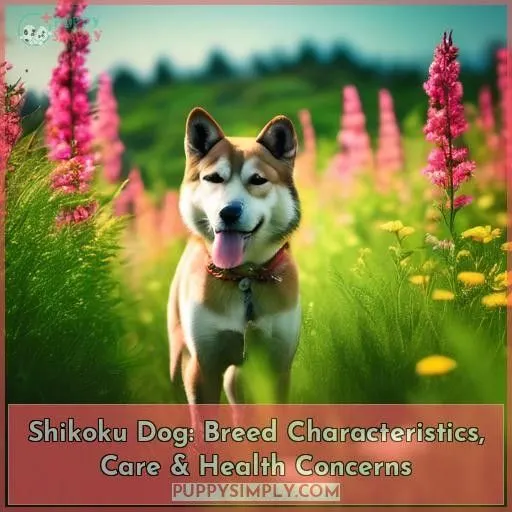
If you’re seeking an intelligent, courageous, and devoted companion, the Shikoku dog might be the perfect fit! This medium-sized spitz-type breed from Japan’s mountainous regions sports a distinctive thick coat, pointed ears, and a short, curly tail.
Historically used for hunting wild boar, the Shikoku is now a beloved family pet known for its loyal and protective nature. However, this energetic breed requires experienced owners who can provide ample exercise and early socialization.
While not hypoallergenic, the Shikoku’s striking appearance and rich history make it an alluring choice for those seeking an active, devoted canine companion.
Table Of Contents
Key Takeaways
- The Shikoku dog is a medium-sized spitz-type breed from Japan’s mountainous regions, known for its distinctive thick coat, pointed ears, and short, curly tail.
- The breed was originally used for hunting wild boar and is now a beloved family pet, known for its loyal and protective nature.
- Shikokus require experienced owners who can provide ample exercise and early socialization, as they are prone to health issues such as elbow, knee, or hip dysplasia, luxating patella, epilepsy, allergies, and obesity.
- While not hypoallergenic, the Shikoku’s striking appearance and rich history make it an alluring choice for those seeking an active, devoted canine companion.
Breed Characteristics
The Shikoku is a medium-sized spitz dog from Japan, known for its thick fur, pointed ears, and short, upward-curling tail. This breed was developed in the mountainous regions of Shikoku Island and was originally bred to hunt wild boars. Shikokus are intelligent, courageous, and protective, making them excellent companions for experienced owners. They require consistent training and socialization to make them well-behaved and obedient.
Shikokus aren’t hypoallergenic, as they’ve a thick coat consisting of two layers with medium shedding throughout most of the year, along with a shedding season in which they drop undercoat fur at much higher rates. They’re also prone to health issues such as elbow, knee, or hip dysplasia, luxating patella, epilepsy, allergies, and obesity.
To make sure a healthy Shikoku, consider genetic health testing and crossbreeding with other breeds to introduce new genetic traits. Proper nutrition, regular exercise, and grooming are essential for their overall health and well-being. Adopting or purchasing a Shikoku from a reputable breeder is recommended, as they’re rare and may require traveling to reach a responsible breeder in North America.
Origin and History
The Shikoku breed originated in the mountainous regions of Shikoku Island, Japan, where it was primarily used for hunting wild boars and other game. The breed’s name, Shikoku, was chosen to honor its place of origin. The Shikoku Dog was officially recognized by the Japanese Kennel Club (JKC) in 1937 and gained international recognition by the Fédération Cynologique Internationale. Despite its popularity in Japan, the breed remains relatively rare outside of the country, with annual registrations of 200-300 puppies in Japan and an estimated population of 4000-6000 dogs.
The Shikoku breed is part of the Nihon Ken group, which includes other primitive breeds like the Akita and Shiba Inu. It’s recognized by various kennel clubs worldwide, including the American Kennel Club (AKC) through its Foundation Stock Service. Although the breed is known for its loyalty, intelligence, and striking appearance, it isn’t as well-known as some other Japanese dog breeds, such as the Akita or Shiba Inu.
The Shikoku breed has a rich history rooted in the mountainous regions of Shikoku Island, where it was bred for hunting large game like boars and deer. Its exceptional tracking abilities, agility, and endurance made it highly appreciated in the rugged terrains of Shikoku. Over time, the breed’s distinct characteristics and working abilities were carefully preserved and refined through selective breeding.
Care Requirements
As an active breed, the Shikoku requires moderate daily exercise to stay physically and mentally fit. Its double coat needs regular brushing to prevent matting and keep it looking its best.
Exercise
As a devoted companion, your Shikoku will benefit from regular exercise to maintain their moderate energy levels. Aim for at least 30 minutes of daily walks, and consider activities like lure coursing or agility to cater to their high prey drive.
For puppies and seniors, adjust exercise intensity and frequency accordingly, ensuring they receive the right amount of exercise for their age and health status.
Grooming
Your Shikoku’s thick fur requires regular brushing to prevent matting and tangles. Deshedding is essential during seasonal shedding, especially for those with hypoallergenic concerns.
The breed’s independent nature means they may not always appreciate grooming, but short tails and pointed ears make it easier to reach all areas.
Remember to maintain their coat’s health with a balanced diet and appropriate exercise.
Training
Training your Shikoku requires patience and consistency. Positive reinforcement methods work best, focusing on rewards rather than punishment. Socialization is essential for obedience and addressing health problems like knee and elbow dysplasia. Remember, red training is about building a strong bond with your furry friend.
Common Health Problems
Moving away from the specialized care your Shikoku requires, let’s delve into the details of their health history. These sesame and black and tan athletes may have a durable lifespan, but they aren’t exempt from genetic conditions such as hip dysplasia, a frequent problem that hinders their movement.
Unlike their relative, the Shiba Inu, they may also encounter the obstacle of a luxating patella. Bear in mind, timely action prevents complications, so regular check-ups and dental care are your most effective strategies for maintaining the well-being of these energetic companions.
Diet and Nutrition
As a Shikoku owner, you’ll want to provide your furry friend with a balanced diet that caters to their nutritional requirements. Here are four options to think about:
- Homemade Meals: Prepare meals from scratch using high-quality ingredients, ensuring they get the right balance of proteins, fats, and carbohydrates.
- Commercial Kibble: Choose a high-quality kibble that meets their nutritional needs and avoids any food sensitivities.
- Raw Diet: Consider a raw diet, which can provide a more natural source of nutrients, but requires careful planning and balancing.
- Supplements: Add supplements to their diet, such as fish oil or glucosamine, to support their joint health and overall wellbeing.
Adoption and Purchase
When contemplating embracing or acquiring a Shikoku, it’s imperative to grasp their distinctive attributes and necessities. These canines are astute, athletic, and protective, rendering them suitable for experienced proprietors who can dispense the requisite training and socialization. They’re most apropos for adults sans young children or other pets, as they possess protective inclinations and may turn aggressive if not adequately trained.
Shikoku aren’t hypoallergenic, so they may not be the optimal selection for those with allergies. They’re also susceptible to certain health ailments, such as hip dysplasia, patellar luxation, and epilepsy. It’s fundamental to collaborate with a reputable breeder who can furnish information regarding the dog’s medical history and temperament testing.
Early socialization and training are paramount for Shikoku puppies, as they can be reactive and may exhibit a substantial prey drive. They’re most suited for active individuals or families who can provide the necessary exercise and cognitive stimulation.
When seeking a Shikoku, consider visiting esteemed breeders within the United States or importing from Japan. Be prepared for a considerable investment with regard to time and resources, as Shikoku demand consistent training and socialization.
Breed Overview
The Shikoku is a medium-sized breed with a unique appearance and temperament. Standing at 17 to 22 inches tall and weighing between 35 and 55 pounds, the Shikoku is one of the largest medium-sized Nihon Ken.
Its coat is harsh, straight, and combined with a soft, dense undercoat, typically in sesame, red sesame, or black sesame colors.
The Shikoku is known for its intelligence, courage, and loyalty, making it a great companion for those seeking a protective and athletic breed. Despite its independent nature, proper training can help it become a well-behaved and playful member of your family.
Shikoku Vs. Shiba Inu
The Shikoku and Shiba Inu are two breeds from the same family, but they have distinct differences.
The Shikoku is larger, weighing 35-55 pounds, while the Shiba Inu is smaller, typically weighing 17-23 pounds. The Shikoku has a boxier muzzle and a thicker, longer coat, while the Shiba Inu has a finer muzzle and a shorter, thinner coat.
Both breeds are intelligent and loyal, but the Shikoku can be more independent and challenging to train. They share some health concerns, such as hip dysplasia and epilepsy, but they are recognized by different kennel clubs.
Temperament
Diving into the temperament of the Shikoku, you’re looking at a breed that’s the epitome of marching to the beat of their own drum. These dogs are:
- Fiercely independent, not always keen to follow the crowd.
- Loyal to their core, sticking by you like glue.
- Courageous, never backing down from a challenge.
- Willful, with a mind of their own, making training a game of wits.
- Aloof with strangers, they’re not the type to make friends at first sniff.
In essence, owning a Shikoku is like having a four-legged samurai at your side—brave, loyal, but with a touch of noble aloofness.
Further Research
Further research is essential to comprehending the Shikoku breed thoroughly, particularly regarding genetic diseases and temperament variations. The Shikoku breed is renowned for its allegiance, cleverness, and athletic prowess, but it also carries a greater risk of developing orthopedic issues owing to its considerable size. Genetic screening is advised to pinpoint specific ailments such as hyperuricosoria, degenerative myelopathy, and progressive rod-cone degeneration.
Historical conservation and population developments are imperative in examining the Shikoku breed. The breed possesses a rich heritage in Japan, where it was originally bred for hunting and has received recognition from the Japanese Kennel Club and the Fédération Cynologique Internationale. Nevertheless, its scarcity, even within its homeland, poses challenges to studying and preserving its genetic well-being.
International acclaim is also a pivotal element in further research. While the Shikoku lacks recognition from the American Kennel Club, it forms part of the Foundation Stock Service, which seeks to facilitate its conservation. Comprehending how the breed is perceived and valued in diverse regions of the world can yield insights into its future preservation and potential health concerns.
Frequently Asked Questions (FAQs)
What is the best way to introduce a Shikoku to other dogs?
Slowly and cautiously, pup! Introduce your Shikoku to other dogs in a neutral territory, keeping them on leashes and letting them sniff out the situation. Patience and positive reinforcement are key – don’t force interactions. Let ’em warm up at their own pace.
How can I train a Shikoku to be less reactive towards people?
Peel back the stoic exterior, and you’ll uncover a Shikoku’s sensitive soul. Steady exposure, positive reinforcement, and building trust are the keys to helping your pup blossom into a confident, people-friendly companion. Stay patient – their loyalty is worth the journey.
What is the ideal age to have a Shikoku fixed?
Fixing your Shikoku pup around 12-18 months is ideal. Any earlier and you risk stunting their growth. Wait too long and you could see unruly behaviors emerge. Time it right, and you’ll have a loyal, well-adjusted companion for years to come.
How can I prevent my Shikoku from becoming overweight?
Trim those luscious pounds, champ! Dial up the daily walkies, swap kibble for lean meats, and keep those begging paws off the table scraps. Your regal Shikoku shape’ll stay sleek as a whistle if you put in the paw-work.
What are some common eye conditions that Shikoku are prone to?
As a proud Shikoku parent, you’ll want to keep an eye out for common eye issues like entropion and luxating patella. These can be a real pain, but with quick treatment, your pup will be back on their game in no time!
Conclusion
Admittedly, the Shikoku dog‘s lush coat may require more grooming than some owners prefer. However, this loyal and devoted Japanese breed‘s rich history, striking appearance, and protective nature make it a truly rewarding companion for the right family.
With ample exercise and early socialization, the Shikoku dog can thrive as an active, loving addition to your home.
If you’re seeking a courageous, intelligent Shikoku dog to call your own, this ancient spitz-type breed may be your perfect match.

